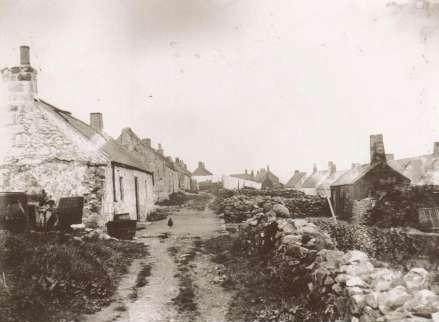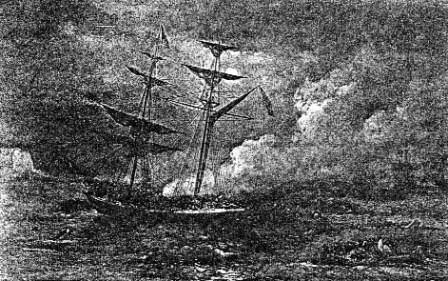
Privateers & Pirates |
A privateer was a private warship authorized by a country's government by letters of marque to attack foreign shipping. Privateering was often described as a form of state-supported piracy. Strictly speaking, a privateer was only entitled by its state to attack and rob enemy vessels during wartime, however, states may have encouraged attacks on opposing powers while at peace, or on neutral vessels during time of war, blurring the line between privateering and piracy.
Privateers were an accepted part of naval warfare from the 16th to the 19th centuries, and were recognised, although not necessarily authorized, by all significant naval powers The costs of commissioning privateers was borne by investors hoping to gain a significant return from prize money earned from enemy merchants. It has been argued that privateering was a less destructive and wasteful form of warfare, because the goal was to capture ships rather than to sink them.
 So were there ever any privateers or pirates around
Portlethen? Yes, of course there were! Most of coastal Britain suffered
(or benefited?) through privateering or piracy which was an integral
part of early maritime life and the north east coast of Scotland would
have been no different from other areas of Britain, although perhaps we
never experienced it to the same extent as other more populous areas around the coasts where shipping was more
frequent.
So were there ever any privateers or pirates around
Portlethen? Yes, of course there were! Most of coastal Britain suffered
(or benefited?) through privateering or piracy which was an integral
part of early maritime life and the north east coast of Scotland would
have been no different from other areas of Britain, although perhaps we
never experienced it to the same extent as other more populous areas around the coasts where shipping was more
frequent.
Smuggling took place along our coasts too, and gin appeared to be a popular commodity that was transported up and down the coast illegally however, unlike Devon or Cornwall, this pastime wasn’t quite so frequent in our area. Anyway, that’s an entirely different story.
The following article appeared in “The Scots Magazine” in 1780 and appears to be a report of an act of privateering that occurred off the coast at Portlethen. I’m quite sure that this wasn’t the only act of piracy or privateering that happened here but this one account gives you a flavour of maritime life around the 18th century.
“The Rohan Soubise of Dunkirk, a privateer of 22 nine pounders and 180 men, has made several captures on the north coast of Scotland. On the 8th of November, a few miles south of Aberdeen harbour, three vessels hove in sight; one of which, Captain Narval she captured; another, the Susannah, run in among rocks at the Cove, where there is a harbour for little boats, whither the privateer sent her boats, and cut her out; and the third, a brig belonging to Inverness, run into the harbour of Portlethen, a fisher-town, and the privateer prepared her boats to cut her out also.
 Upon application of magistrates of Aberdeen to Colonel
Sutherland of the Sutherland
fencibles,
a party was sent, under the command of Captain Maclean, who marched with
great expedition. The Susannah was carried off before they arrived at
the place, which was three miles distant from Aberdeen; they therefore
proceeded to Portlethen, which was three miles farther, and arrived just
in time; for immediately after their arrival, two boats came from the
privateer, who lay it about 350 yards from the rocks, to carry off the
brig.
Upon application of magistrates of Aberdeen to Colonel
Sutherland of the Sutherland
fencibles,
a party was sent, under the command of Captain Maclean, who marched with
great expedition. The Susannah was carried off before they arrived at
the place, which was three miles distant from Aberdeen; they therefore
proceeded to Portlethen, which was three miles farther, and arrived just
in time; for immediately after their arrival, two boats came from the
privateer, who lay it about 350 yards from the rocks, to carry off the
brig.
Captain Maclean having privately disposed his men suffered the boats to go alongside the brig. The men in the boats observing the party among the rocks, fired upon them. The fencibles returned the fire, and did execution so that some of the privateer’s men who had got on board the brig, cried for quarter; which the Captain promised, on condition of their coming onshore, and surrendering; but the rendition not being complied with, and flash being observed in the brig, which was supposed to be an attempt to set her afire, the fire was renewed. Night coming on, the boats escaped by darkness.
Captain Narval, being ransomed, gave an account that he was on board the privateer when the boats returned; that four of their men were killed and five wounded, two or three of the former officers; and that the large boat was so much hurt, that it was with difficulty she could reach the privateer”.